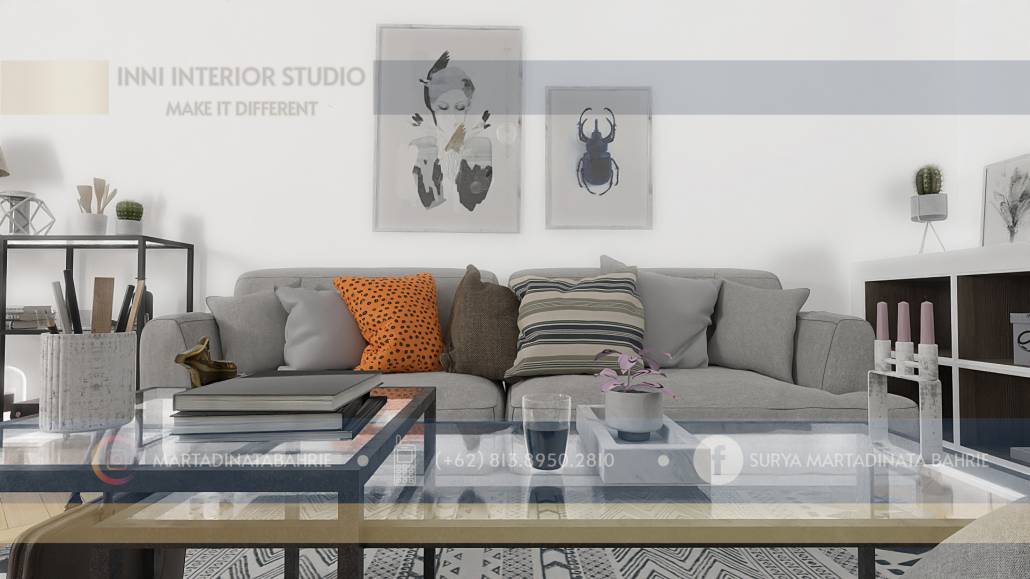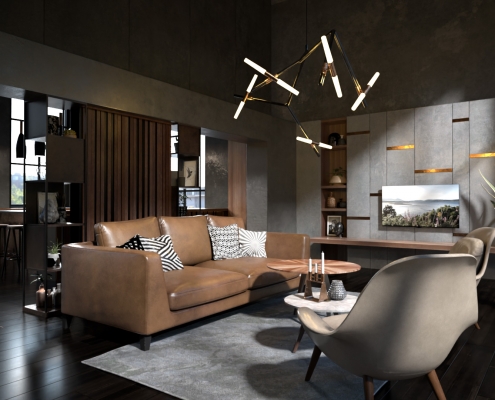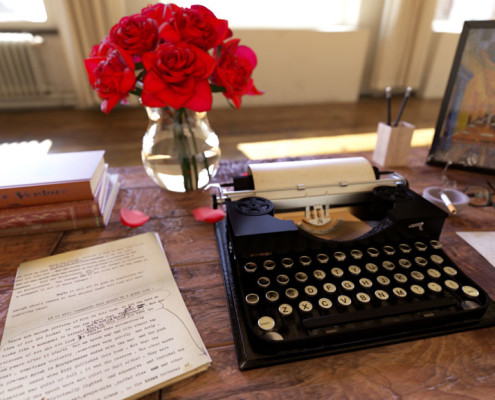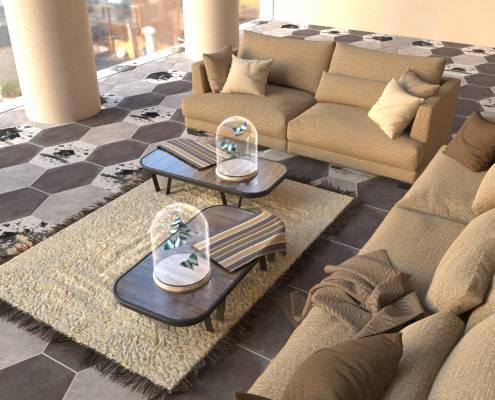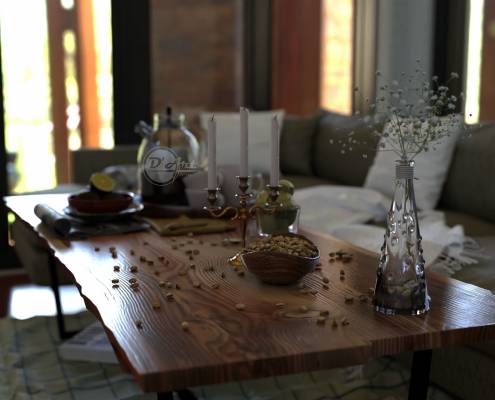Top 5 Tips for Interior Design Rendering
It’s true! Creating the perfect interior design rendering can be time consuming and frustrating. The amount of detail, materials, colors, and textures that go into creating a beautiful interior rendering can quickly become overwhelming. With that said, a few simple tips compiled by the FluidRay team will help take your interior design renderings to the next level so you can effectively communicate your talents to your clients. When done right, renderings will set you apart from your competition and demonstrate your capabilities. Keep reading to learn our top 5 tips for creating a professional interior design rendering that will impress your clients!
1. Create Believable Surroundings
To create a realistic interior design rendering, include believable surroundings to help set the feeling of the space. Selecting an appropriate background will draw the viewer into the rendering and help them experience the details of the final design. Consider details like materials, flooring, items in the room, plants, and furniture and aim for simple, yet accurate, details. Use natural colors and minimize complicated scenes for an interior design rendering that will impress viewers and highlight your design abilities.
Sitting room with realistic surroundings
2. Illuminate, Illuminate, Illuminate
One of the most important aspects of an interior rendering is the lighting. You’ll want to pay attention to both environmental lighting and artificial lighting. Creating these lighting effects in FluidRay is fast, easy, and produces beautiful results that will impress your clients! Get this right and your rendering is realistic and beautiful. Done incorrectly though, your rendering is awkward. Luckily, with a little attention, illuminating your rendering properly is easy. In fact, this short rendering tutorial explains how to set lighting in your FluidRay rendering. Note, that while this tutorial starts with a SketchUp model, FluidRay is compatible with most 3d modeling software applications.
Interior rendering tutorial
3. Take Advantage of Caustics
Caustics are the flickers of light that come off water and are a significant contributor to lighting in the real world. In renderings, these flickers are often quite tricky to perfect. Designers will often avoid the need for caustics by leaving water out of their renderings. Including caustics though makes a rendering that much more believable. FluidRay handles caustics effectively and efficiently, allowing you to take advantage of this important lighting detail. Go ahead and include water features in your interior renderings!
Credit: Mihajlo Ivkovski
4. Refine Textures and Materials
An interior rendering incorporates many colors, textures, and materials. Certain materials and textures will look different depending on the situation and especially the time of the day. For example, if your rendering is intended to look like a photograph shot during the evening golden hour, you’ll want the rendering to look warm and not washed out. Refine textures and materials to look realistic to the environment and include the appropriate level of dullness or shine. Because FluidRay renders in real-time, you can quickly adjust textures and materials in the viewport until the rendering looks just right.
Room with natural sunlight
5. Determine Your Focal Point, Camera Position
Setting the focal point of a rendering to be viewed from a specific angle or point of view allows you to create a certain tone and more natural look. Perhaps you want your image to be viewed from above or from an angle. Or, perhaps you want to focus on a small portion of the room to highlight a specific feature. Consider what you are trying to emphasize in your rendering and choose a focal point accordingly.
Focal point highlights coffee table
FluidRay helps interior designers easily create beautiful renderings. If you want to experience the power of how FluidRay can help you create expert interior renderings, download our software for a free trial. Our pricing is inexpensive and we offer an extensive library of tutorials so anyone can experience the good side of rendering!

